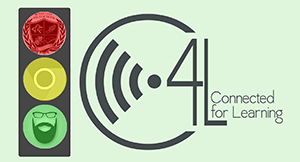How EdTech and Culture Work Together to Retain Teachers
BY Casey Thompson
The good news on nationwide teacher numbers is that the teacher population only shrunk 17% through the pandemic, and not the 50% some had predicted. While the pandemic isn’t over yet, and 17% is bad enough, many districts are still dealing with severe teacher shortages.
If you’re one of the lucky districts that isn’t, or if you’re looking to stem the tide, these recommendations can help you build your institutional culture and hold onto your most valuable resource.
Focus on what matters most to teachers
Most teachers want nothing more than to teach children, and will go to great lengths to nurture the students entrusted to them.The parts of a teacher’s job that aren’t teaching—those most often cause teachers to quit.
They include things like:
- Taking attendance
- Testing
- Grading
- Compliance
- Navigating technology platforms and their related modalities
These are situations where edtech has to shine.
These are also opportunities to ask questions like:
- How can my current edtech solution streamline attendance-taking?
- How can it ease the testing burden?
- How can it accumulate and report out data for compliance purposes?
- How can it streamline and simplify training on new technology platforms?
Read: The Hidden Costs Of Poor Edtech Support
Teachers want to teach: Keep your eyes on the prize, and let your edtech system help.
Recognize achievement
Teachers are heroes. They’ve always been heroes, but the pandemic showed that they were willing to risk their own lives to improve the lives of their students.Recognize that, and encourage the community to recognize it as well.
Most teachers will probably not want to be called heroes–but they won’t mind if you treat them as such.
(P.S. This goes for your substitutes as well.)
Read: How Edtech Can Help Recruit and Retain Substitutes
Ask them how they feel
Do you know the problem with employee surveys? The Wall Street Journal does.In an August 2020 article, the paper stated that, “Many workers don't take surveys seriously because they don't believe management will do anything with the results.”
Don’t be that employer. Have an honest dialogue with your teachers, whether through a focus group or informal sit-downs. Have multiple channels for communication, keep them open, and respond quickly.
Will many of the issues raised be outside your ability to change? Yes. But being open about it can change the “us vs. them” to a “we.” And it’s a lot harder for a teacher to leave a “we” situation than an “us vs. them.”
Caring deeply about your teachers is never bad. Communication is the way forward.
Realize the power of empowerment
Empowerment is an interesting concept. Studies have shown that many employees would rather be more empowered at work than more highly paid.In the education space, empowerment can be a significant factor in teacher retention. But to make empowerment work you need to know more about it.
Scholarly research has identified four aspects of empowerment:
- Meaning
- Competence
- Choice
- Impact
Taken together, they mean that the more control someone has over their work environment and the more they value what they do, the more empowered they’ll be, the more job satisfaction they’ll have, and the more likely they’ll be to stick around.
Now, think of your current work environment, and particularly how your edtech system can affect each dimension of empowerment.
Building value and meaning
We discussed this earlier, but the more edtech can help streamline the administrative parts of a teacher’s job, the more teachers can focus on the high-value elements that align with their ideals, aspirations, and values.Building competence
A teacher wants to feel they can perform tasks with skill, and the pandemic strained that ability by introducing new technology, teaching modalities, and reporting requirements.An edtech system should be able to assist with competency-building, provide resources when things go awry, and make record-keeping easier–and the system itself should have an accessible interface and intuitive navigation.
No teacher wants to feel like they’re drowning in a sea of tech. It’s important to monitor and intervene–and to fix the system, not the teacher, when problems arise.
Allowing choice
To what extent does your edtech system prescribe what teachers can do, and to what extent does it just let them teach?Teachers want to own their classroom–and they especially don’t want to be told what to do by a computer. Your edtech system should let teachers do what they do best the way they do it best, and be gentle in suggesting efficiency improvements.
Creating impact
Can your edtech system help teachers effect change? Assuming there’s an adequate feedback loop built in, absolutely.Think of it as a modern-day suggestion box. Not every suggestion put into the box gets implemented, but enough do to keep the suggestions flowing.
The issue of teacher attrition isn’t going away. Using your edtech solution to build satisfaction and empowerment can help turn the tide in your favor–and that’s welcome news on the teacher-staffing front.
WHAT'S NEXT FOR YOUR EDTECH? The right combo of tools & support retains staff and serves students better. We'd love to help. Visit skyward.com/get-started to learn more.

|
Casey Thompson Web & Digital Media Manager |




